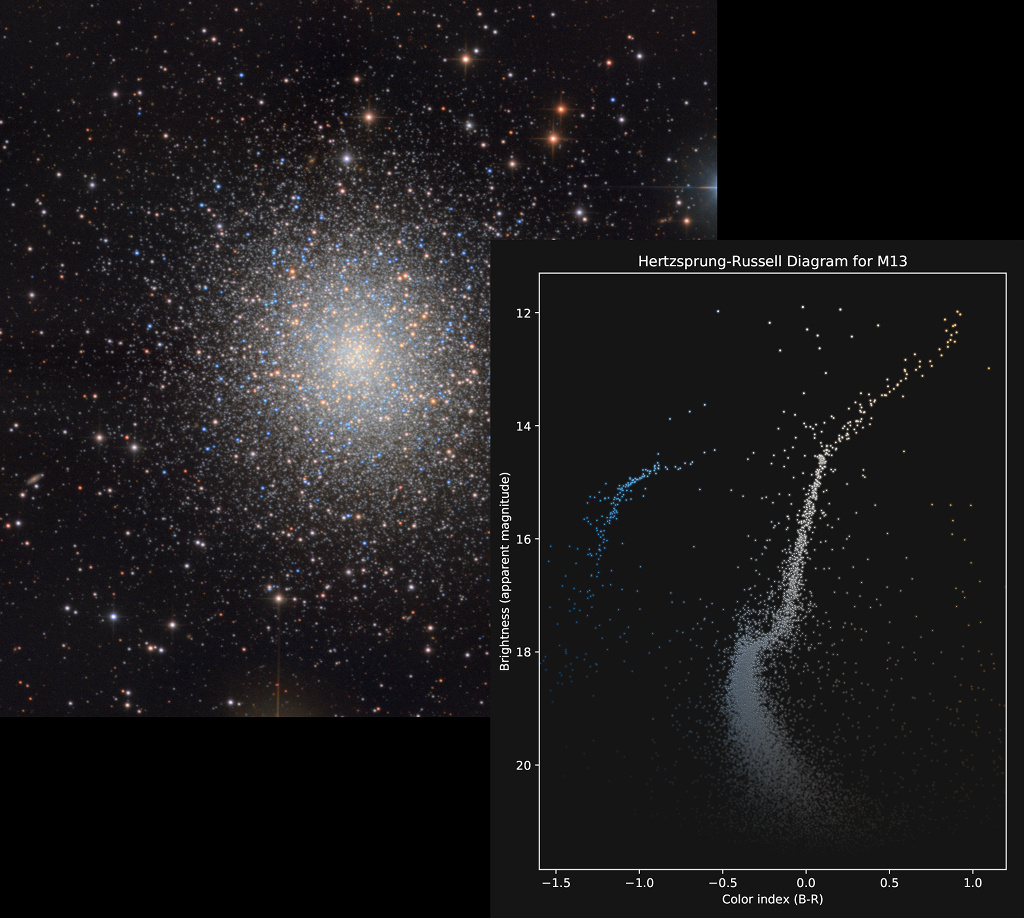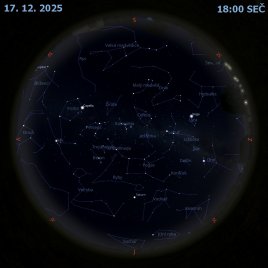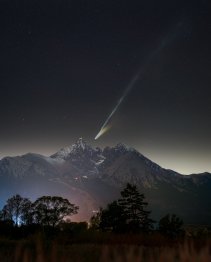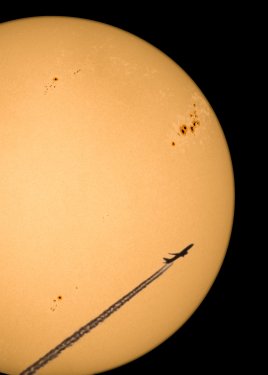Barvy a magnitudy M13

Image Credit & Copyright: Tolga Gumusayak, Robert Vanderbei
M13 se nazývá jako Velká kulová hvězdokupa v Herkulu. Koule hvězd čítajících stovky tisíc nahuštěných do oblasti o průměru 150 světelných let se nachází asi 25 000 světelných let daleko. Ostrý barevný snímek M13 vlevo nahoře dobře zná mnoho astrofotografů. Přesto diagram barvy versus magnitudy v M13 na panelu vpravo dole pořízený ze stejných obrazových dat nabízí další více vypovídající pohled. Diagram též známý jako Hertzsprung-Russellův (HR) diagram vynáší zdánlivé jasnosti jednotlivých hvězd v kupě proti barevnému indexu. Barevný index se pro každou hvězdu určuje odečtením jasnosti (v magnitudách) změřené přes červený filtr od její jasnosti změřené přes modrý filtr (B-R). Modré hvězdy jsou horké a červené hvězdy jsou chladné, takže astronomický barevný index se pohybuje od modřejších k červenějším hvězdám a sleduje poměrnou teplotu hvězd od leva (horké) do prava (studené). V HR diagramu M13 hvězdy zřetelně spadají do odlišných skupin. Široký pruh sahající úhlopříčně zprava odspodu je hlavní posloupnost kupy. Ostrý obrat doprava nahoru sleduje větev červených obrů, zatímco modří obři jsou uskupení vlevo nahoře. Hvězdy v M13 vznikly ve stejnou dobu a nejprve se všechny nacházely na hlavní posloupnosti podle hmotnosti, ty s nižší hmotností vpravo dole. V průběhu doby se hvězdy s vyšší hmotností vyvinuly mimo hlavníposloupnost do červených a modrých obrů a dál. Poloha obratu na hlavní posloupnosti do větve červených obrů ukazuje, že hvězdokupa má věk asi 12 miliard let.
Seznam odkazů v popisu
- Wikipedia: Messier_13
- NASA: Messier 13 (The Hercules Cluster)
- AstroBin.com: Tolga: M13 and HR Diagram
- Princeton.edu: Hertzsprung-Russell Diagrams for Globular and Open Clusters
- Wikipedia: Hertzsprung%E2%80%93Russell_diagram
- Wikipedia: Magnitude_(astronomy)
- APOD: 2014-05-30 Planetární mlhovina Abell 36
- Harvard.edu: Globular Clusters as Cradles of Life and Advanced Civilizations
NASA Official: Phillip Newman Specific rights apply. NASA Web Privacy Policy and Important Notices
A service of: ASD at NASA / GSFC & Michigan Tech. U.
Odkaz na originální APOD


